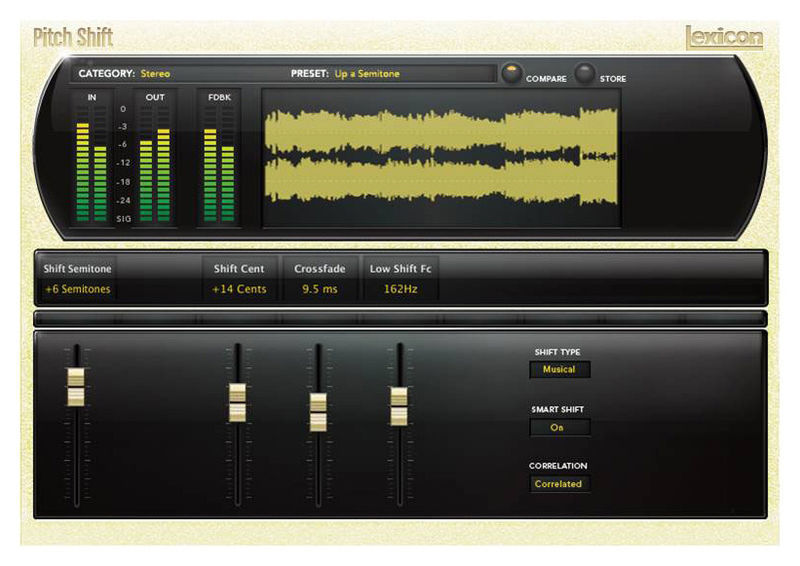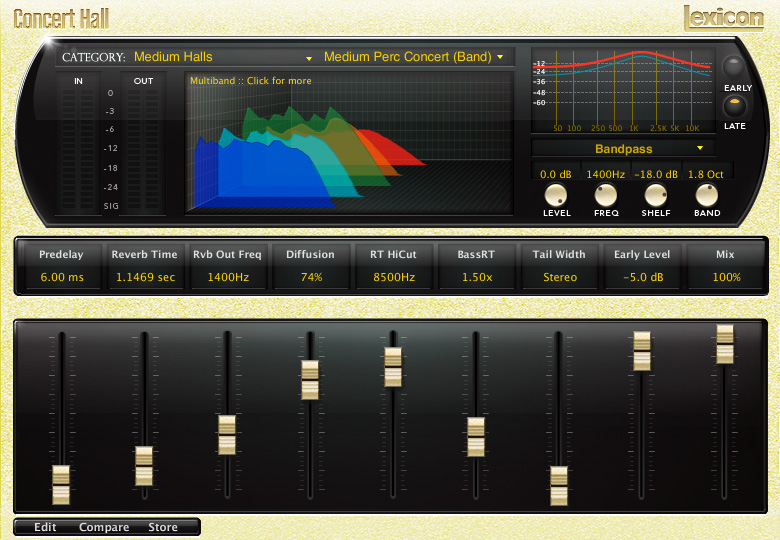

The CP-3/CP-3+ were the first of its home theater products to be THX certified. Later, a CP-2 was released, followed by the CP-3 and the CP-3+. Lexicon's first foray into home theater equipment was with its surround processor, the CP-1.
#LEXICON REVERB PLUGIN SPECIALS PROFESSIONAL#
Lexicon continues to benefit from its initial LARES research and development with the company offering a scaled-down and simplified microprocessor controller, the MC-12, intended for auditory enhancement within home and professional listening spaces. LARES Associates split away from Lexicon in 1995. LARES uses microphones to pick up the sound, central processing units to apply time-variant anti-feedback, delay and reverberation algorithms, and banks of loudspeakers to bring the enhanced audio signal back into the performance space. In 1988, Lexicon developed LARES, an electronic processing system intended to give performance spaces a tailored acoustic experience. They were notable in that they could be expanded with a Lexicon reverb daughterboard that was then accessible to the recording software. In the mid 1990s, Lexicon Studio and Core2 audio interfaces were introduced. In the following years, Opus was upgraded with EQ and console automation. This system feature 8 channels of disk I/O along with an integrated 12 channel digital mixer. Lexicon was a pioneer in the hard disk recording market, introducing the Opus system in 1988. A new low-priced reverb series, the MX series, was introduced in the 2000s, with the Lexicon MX200 as the entrance model.
#LEXICON REVERB PLUGIN SPECIALS SERIES#
Īlso from the 1990s comes the consumer-level LXP series including the LXP-1, LXP-5, LXP-15, and the LXP-15II, and later the affordable MPX1. Lexicon continued the PCM series in the 2000s with new mid-level units including the PCM-96 and PCM-96 Surround, standalone reverb units that easily integrate into digital audio workstation (DAWs). This card was repurposed and released in 1997 as the Model 300, another iconic reverb/multi-effect unit. The NuVerb, one of the first add-on DSP cards, was released in 1993 as a plug-in card for NuBus-based Macintosh computers. In the 1990s, Lexicon continued the PCM series with two new units, the PCM-80 reverb/multi-effects unit and PCM-90 digital reverb.
David Gilmour from Pink Floyd used a Lexicon PCM-70 to store the circular delay sounds in songs such as " Shine On You Crazy Diamond" and " Time" in 1994's The Division Bell Tour. The MRC, an early MIDI control surface, was released in the late 1980s to provide remote control of the PCM-70, LXP series processors, and other MIDI devices. First in the series was the PCM-60 (1984), followed a few years later by the Lexicon PCM-70, the latter adding multi-effects from the 224X and a digital screen interface.

The PCM series was introduced as a smaller, more economical option particularly in live situations where the 224XL was too cumbersome for a rack rider. In 1986, Lexicon released the 480L, a successor of the 224XL. Also released in 1979 was the Prime Time, one of the first digital delay units designed explicitly to provide effects. The company was among the first to produce commercially available digital reverb equipment, beginning in 1979 with the Model 224. Lexicon is considered "the godfather of digital reverb", as one of the early players on the reverb/reverberation market. The first product to market was the popular Gotham Delta T-101 delay in 1971, followed by the Delta T-102, the first product to bear the Lexicon name, in 1972. Lexicon is sometimes credited as the inventor of commercial digital delay products. Professional audio equipment Digital delay systems


 0 kommentar(er)
0 kommentar(er)
